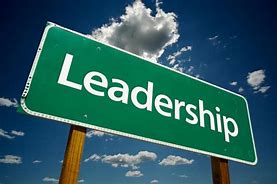
BY Thomas Oppong
After years of “career experiments,” two clear life paths stand out to me. Just two choices people make, sometimes without realising it. Decisions that define almost every area of our lives. The most successful people pick one of these paths early. And stick around long enough for it to work. Everything that follows grows from those two decisions. The work you do. The skills you build. And the doors that open for you. I’ve seen both work. Different roads. But they can all help you build the life you want. You don’t need to have it all figured out. You can’t. No one can. But once you understand these two choices, you start aiming for what you want.
Choice one: Be the best at one thing
Hone your specific knowledge. This path cannot be any clearer. You pick one skill. One craft. One path. And you go all in. Not ten things. One. You wake up thinking about it. You go to sleep obsessing over it. You become it. And own it. This choice scares people. It feels limiting. Like you’re closing doors. You are. That’s the point. Choice one is the engineer who’s been solving similar problems for decades. Or the writer who’s still honing her craft after everyone quits. The rewards compound over the years. Skills stack in your favour. Reputation grows. Doors open because people trust you to deliver. When you commit to one thing, you know what to say yes to. You know what to ignore. That alone puts you ahead of most people. But you have to get it right from the start. Think ten, twenty years down the line. Are you still happy doing the same thing? Will automation reduce the demand for your skill?
Specific knowledge matters. It runs the primary systems we all rely on. For a writer, it’s their voice. For a surgeon, it’s a skill. The stuff people can’t Google in five minutes. If you become the best at something, really the best, you can be so good they can’t ignore you. But the process takes time. You need more than ten thousand hours for that. Being the best takes sacrifice. Years. Maybe decades. You’ll have to say no to almost everything else. And hope AI doesn’t disrupt your path to the life you want. This route works. But it’s rare. And it’s not for everyone.
Choice two: Master meta-skills
You build range on purpose. You are not great at just one thing. But you’re very good at two or more. You stand out by combining many strengths. Meta-skills are skills that help you learn other skills faster. They travel with you. Things like learning how to learn, writing clearly, thinking in systems and talking or listening to people. Mastering meta-skills means you are not attached to one identity. You know how to ask good questions, how to break problems down. And how to teach yourself new things. You switch between different sets.
You collect experiences. You learn fast by adapting. Different roles. Different industries. Different people. I’ve seen friends do this well, too. They easily go from design to marketing to product. They are good at connecting dots that other people miss. You don’t need to be the smartest person in the room. You need to adapt faster than the room changes. And it changes a lot.
If you’re good at coding and public speaking you have leverage. Most programmers can’t pitch. You can. That becomes your strength. Or maybe you’re solid at business strategy and strong at storytelling. That combination makes you unstoppable. The secret is to stack rare but useful skills. It creates a mix that’s hard to copy. That’s how you become irreplaceable. Be interesting and useful in a combination of ways.
This is the part people struggle with. If you only pick one thing, you risk getting stuck when things are changing. But you can still win if you pick right. And hone a few meta-skills too. If you only collect meta-skills, you stay indispensable. Together, they compound. Your specific skill makes you extraordinary. Your meta-skills give you range. You become irreplaceable without getting rigid. You can pivot without starting from zero. That’s how careers last. That’s how confidence grows.
I’ve changed my “one thing” more than once. Each time, the meta-skills came with me. If you are already on a specific path, what skills would make you better at learning anything else later? Keep an open mind. Designing your extraordinary life is not really about which option is “better.” But the path that works better for you. For the life you want.
By all means, pick one thing. And own it. But then, look up. Learn the skills that let you keep moving. Use your specific knowledge as a foundation.
A great life is the work you’re known for, connected by the wisdom you apply daily. Don’t let your one amazing skill become your entire personality. Let it be the foundation. Then build everything else on top of it with the meta-skills.
Source: Fast Company







